London’s impressive Science Museum illustrates the history of science and technology from around 1700 to today. The museum covers a wide variety of subjects, from engines and space travel to computers and medicine.
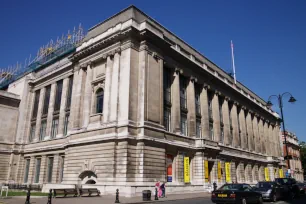
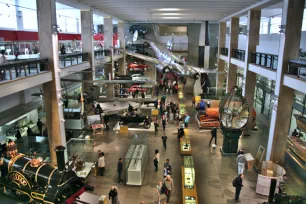
Even the most science-averse people will find something of interest here, be it the massive steam engines, the space rockets, thermal cameras, mechanical computers or curiosities such as a rolling-ball clock or the first automatic tea-making machine. The museum also has many hands-on experiences; you can try one of the oldest computer games, experiment with light or take control of a real flight simulator.
History
The Science Museum was created in 1909 when the scientific collection of the V&A Museum was made independent. In 1913 the new museum moved to its own building, a large neoclassical structure designed by Richard Allison. The architect modeled the interior on department stores and created large open spaces ideal for the display of the museum’s massive machines.
Over the years, the museum’s collections kept growing, in particular in the 1980s, when the collection of the Wellcome Museum of the History of Medicine was acquired. In 2000 the museum expanded with the opening of the new Wellcome Wing, which added 10,000 square meters (100,000 sq ft) of exhibition space and houses among others an IMAX 3D movie theater.
The Museum’s Collections
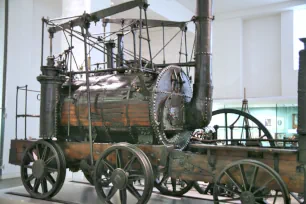
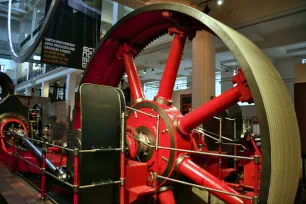
Thanks to its clear and open layout, the museum is easy to navigate. The main building has seven floors; each floor contains several galleries covering different scientific topics. Due to the museum’s size, it is difficult to see everything in one go, and it might be a good idea to get a map of the museum at the entrance hall and make a selection of galleries you want to visit.
Basement
The basement of the museum explains the basic fundamentals of science. The ‘Garden’ introduces children from three to six years to science in a hands-on environment where they can pull levers and experiment with water, light and sound. The basement is also home to a gallery that reveals the technology behind common household items.
Ground Floor
The ground floor is usually the most crowded and houses some of the museum’s largest objects, including a giant red mill engine in the Engine Hall that, from 1903 until 1970, used to power 1700 looms at once. One of the most popular galleries in the museum is the Exploration of Space, where you can see real rockets and space suits. Another gallery, ‘Making the Modern World’, highlights key breakthroughs in technology, from the ‘Puffing Billy’ – the world’s oldest steam locomotive – and the Ford T – the first affordable car – to supercomputers and personal computers.
First Floor
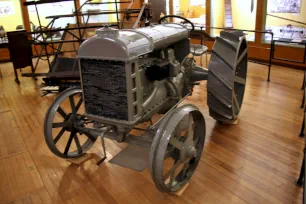
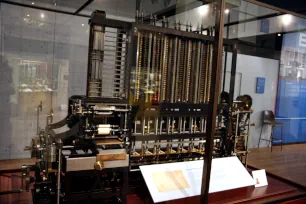
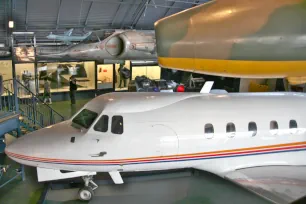
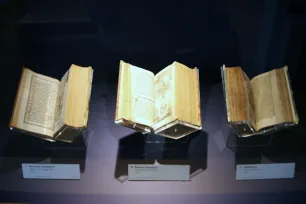
On the first floor you can discover all sorts of materials, from ceramic tiles to fiber, and learn about their properties and how they are used. Another gallery on this floor explores the world of telecommunications – showing the progress made over the last one hundred years, from letters over telegraphs to mobile phones. Other galleries on the first floor show the history of agriculture, the study of the cosmos, and the measurement of time through the ages – with a pretty impressive collection of sundials and clocks.
Second Floor
The second floor tackles the world’s energy problems and its dependence on fossil fuel. Other galleries revolve around our digital world and its history: mathematics, electronic music and the evolution of computers are covered here. You can see old synthesizers, the oldest working electronic computer and the Difference Engine no. 2, a huge mechanical computing device conceived in the nineteenth century.
Third Floor
A large part of the third floor is occupied by the museum’s collection of airplanes, which includes an exact replica of the Wright brothers’ first airplane. On the same floor is the Launchpad, an interactive experience geared towards children, and an overview of science in the Age of Enlightenment during the eighteenth century.
Fourth & Fifth Floor
On the fourth and fifth floors you find the collection of Henry Wellcome, which shows the history of medicine from the Neolithic Period to today. Here you can see how they performed surgery thousands of years ago, see the microscope of Louis Pasteur and president George Washington’s false teeth. There are also some displays focused on veterinary history.
Wellcome Wing
The galleries in the Wellcome Wing, which is connected to the main building on the ground floor, are focused on contemporary science and today’s rapidly changing technologies. Children will love the hands-on experience in the Pattern Pod, while adults will be intrigued by ‘Who am I’, an interactive experience on the first floor which investigates what traits make us who we are. The second floor covers the hotly debated climate changes, and the top floor explores the technology of the future.
- Next: Canary Wharf
- More Sights & Attractions in London

